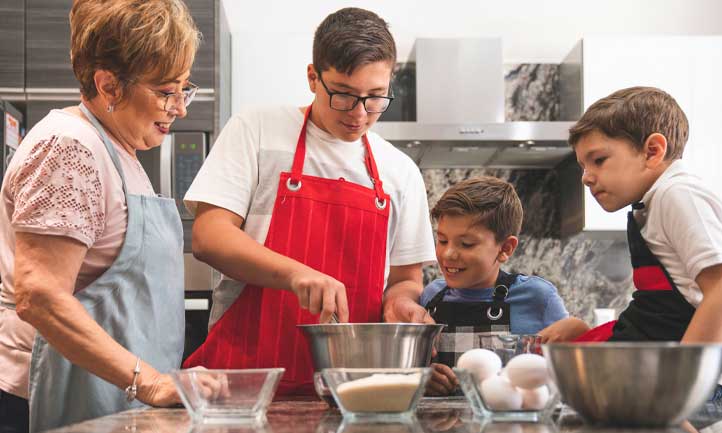The Art of Cherishing
Author: Alan Wolfelt
After the death of someone close to you, you enter a time of deep grief. This is a normal and necessary time of transition. If you use this period of intense grief to actively and intentionally engage with your painful thoughts and feelings, you find ways to express them that are helpful to you. In other words, you do the hard work of mourning. You share your grief outside yourself — in doses over time — so that you begin to integrate your loss into your ongoing life.
Essentially, you mourn well so that you can eventually go on to live well and love well. Over time, you come to understand that while your grief is not something you “get over,” it has become an integrated part of your life story.
Your love is not something you get over either. Many people who have suffered the loss of a special loved one continue to feel their love for the person just as much after the death as they did before the death (and sometimes, even more). Is this true for you?
If it is, you may have found yourself unsure of what to do with your love now. After your time of deep grief has passed, how do you continue to love and honor special people who have died as you fully live out your own remaining precious days here on Earth?
It’s a tough question, and answering it in a way that feels right for you can be a difficult balance to find. As one grieving husband, Garrick Colwell, wrote to me, “Learning how to love my wife in her absence has been the biggest challenge I’ve had to face as I grieve and mourn her loss.”
One of the most important things I’ve learned in working with countless grievers over the years (and from my personal loss experiences) is that honoring and continuing to express love for those who’ve gone before us is a noble, fulfilling pursuit.
What’s more, it’s necessary. We continue to feel the love, and so we must find things to do with that love. I call the practice of intentionally honoring and holding dear someone who has died “cherishing.”

What Is The Art of Cherishing?
To cherish means to protect and care for lovingly, to hold dear.
It’s instinctual to want to continue to hold dear someone you love who has died. After all, they’re a love of your life! They’re still and always will be a big part of your patchwork heart. You will, no doubt, love them deeply for as long as you live.
You probably feel your love for the person who died constantly. You see a certain object, smell a certain scent, or go to a certain place, and you are reminded of the person who was so important to you. And there it is, a reflection of your love. Your heart twinges, you may smile, you may cry. You may spend a moment feeling your love for them and missing their presence in your life.
The love naturally bubbles up. It’s beautiful, tender, and true. And it’s a kind of cherishing. But the type of cherishing I’m proposing here is the art of more actively engaging with the love in some way.
Cherishing is intentionally creating moments — and taking advantage of opportunities when they naturally arise — to feel and celebrate your ongoing love more fully.
Cherishing also has to do with meaning and gratitude. When you cherish, you are honoring the relationship you had with that person and understanding how they mattered to you. You are pausing to remember and express your appreciation.


The Principles of Cherishing
Cherishing is...
- Loving and holding dear
- Congruent with inner thoughts and feelings
- Active and intentional
- Present-moment oriented
- Life-affirming
- Grateful
- Honoring of Meaning
- Bittersweet (not all painful, but instead a mix of happiness and hurt)
Cherishing often includes:
- Using the name of the person who died openly, freely, and often
- Telling stories about the person who died
- Making others feel comfortable and invited to talk about the person who died
- Offering others reminders of the person who died when appropriate (“Today was your grandpa’s birthday,” or “She loved eating ice cream”)
- Keeping photos and objects that remind you of the person who died on display and talking about them with others
- Marking special days by honoring or “including” the person who died in some way (more about this soon)


Cherishing Rituals
The following example rituals are opportunities to cherish in depth and with structure. After reading through them, I’m sure you’ll have your own ideas about cherishing rituals that would suit your family and help you continue to appreciate and express your love for the person who died.
Write down stories.
Write down stories of the person’s life, death, and your love and loss. You can select to read one aloud at special holiday times, such as before Thanksgiving dinner. Or, compile the stories into a book and share copies with family and friends.
Create an anniversary ritual.
On the anniversary of the death or another significant date that you know will be painful for you, set up a routine that allows you to take a few moments to focus on and embrace your pain, your love, and your gratitude. The ritual can be done individually or with a group.
Make a gratitude jar.
Whenever you remember something about the person who died that makes you feel grateful, jot it down on a slip of paper and put it in the gratitude jar. Invite friends and family members to do the same. Once a year, at a group event, such as a birthday or on the anniversary of the death, gather everyone together and read the slips of paper aloud.
Include the person who died in any future rituals.
Include the person who died in any future rituals that honor you or your family members. For example, if you will be receiving an honor at work, mention them in your remarks. Or, if you or someone in your family will be getting married, graduating, retiring, etc., find a way to incorporate the spirit of the person who died into the ceremonies.
Plan a road trip.
Create an itinerary of places that have been meaningful to you, your family, and the person who died. As you visit each special spot, take time to reflect and remember. If you keep a travel journal along the way, you’ll have a valuable keepsake you can reread in the years to come.
Keep up a tradition.
Keep up a tradition that was important to the person who died. If the person you miss was especially fond of a certain ritual or tradition — perhaps something on a holiday or other certain time of year — you can honor and include them in your ongoing life by continuing the tradition. For example, my father always enjoyed carving the turkey at Thanksgiving. In my family, before we have dinner we have a tradition of always pausing for a few moments of silence and remembering him.
Support others in grief.
If you’re reading this article, you may well be interested in helping other people who have suffered life losses. When you feel the time is right for you, you might explore ways to help others in grief — for example, volunteering as a support group facilitator or providing companionship to a fellow mourner through TAPS. These are cherishing activities because you will be using your love for the person who died as motivation to help others who are grieving.
Cherishing as a Way of Life
Cherishing isn’t just a way of remembering, honoring, and continuing to love someone who has died. It can also be a way of being. Do you cherish each new day and every encounter with the people you care about? Do you routinely place your attention on what matters? And conversely, are you able to shrug off or ignore the small stuff?
Grief cherishing makes you better at life cherishing. The more you actively engage in cherishing someone who has died, the more you may find your patchwork heart opening, making you a more kind, compassionate, and helpful person. It’s as if the act of cherishing unlocks your vulnerability and capacity for empathy. It better attunes you to emotionality and spirituality.
To cherish is to celebrate and honor love, which is the greatest gift of human life. Grief is love, and love is grief. They are two sides of the same precious coin, and we find meaning in cherishing both.
Alan D. Wolfelt, Ph.D., is the founder and director of the Center for Loss and Life Transition and a member of the TAPS Advisory Board. He has written many books that help people mourn, including "Healing Your Grieving Heart After a Military Death" (coauthored with TAPS President Bonnie Carroll) and "Cherishing: The Art of Fully Living While Still Loving and Honoring Those Who've Died", from which this article was excerpted.
Photos: Pexels
